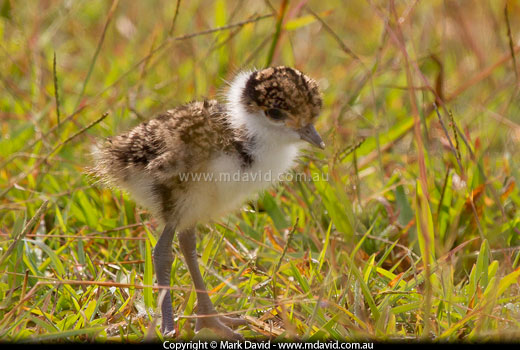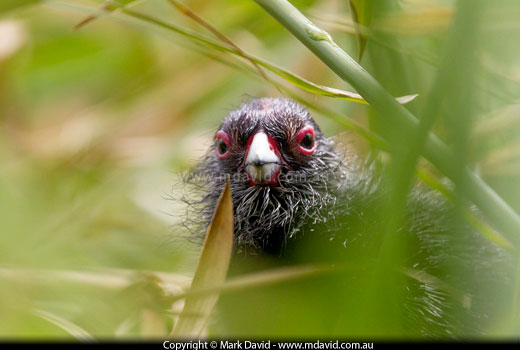
They might look wonderful, but approaching these little guys involves a mix of tricks and responsibilities.
Previous tip | Next tip

Masked Lapwing chick photographed a day after hatching. This little guy was on our front lawn at the time and we watched it grow to maturity.
Birds might never look cuter, but they’re also at their most vulnerable in their first weeks after hatching. So your main priority should be their wellbeing. That might seem obvious, but sometimes the excitement of discovering something that’s both fluffy and waving its little wings around tempts us to rush in with our camera shutters firing. The problem is, that can frighten parent birds away and in some cases lead to the chicks being permanently abandoned.
So you should always keep an eye on the behaviour of the parents. If it changes when you’re around then it means you’re probably too close.
Usually the parents will be going to and from the nest all the time with fairly consistent timing. If they’re away from their nest for longer when you’re around then you’re probably spooking them and it means you should back away.
Never remove any foliage that might be blocking a clear view because it will also be blocking a clear view for predators.

Instead of cutting away any vegetation that blocks your view, leave it there and find an angle that lets you glimpse through it.
Use your longest telephoto lens to ensure that you stay as far away as possible.
Take a few shots and then back away and leave them alone.
When I took the photo of the one-day-old Masked Lapwing (Spur-winged Plover) shown at the top of this page I knew my actions weren’t stressing the critters because the parent was making a special kind of clucking noise they use to indicate that everything’s okay. The parents and chicks were therefore relaxed and acting naturally. In that case I was using a hide and my 100-400mm lens at the 400mm end.
One thing working in our favour is that the places where birds are less stressed by us being around are also the easiest for us humans to get to. Sydney’s Centennial Park is just one example. It has plenty of permanent freshwater ponds attracting heaps of birds. After good rains and when food is abundant, lots of birds breed there, and because there are always people in the park the birds seem much more accepting towards us. Even still, the same rules apply: observing the parents’ behaviour, keeping your distance, using your longest focal length etc.

While I was waiting on the banks of a pond in Sydney’s Centennial Park, a Dusky Moorhen swam almost right up to me and then paddled on, with this little guy following close behind. In cases like that — where the birds casually approach you — then it’s not only a sign that they’re fine with you being around, but you’re also going to get better shots.
Also, there are some places in the world where it’s illegal to take photos of nesting birds. Almost certainly those rules would have been put in place to protect the creatures when they’re at their most vulnerable.
Finally, if taking a picture of a nesting bird is going to upset or interfere with it then it’s really not worth it. Birds acting naturally make the best photos and stressed birds might also mean we end up with fewer birds in those cases where the parents are frightened away. There will always be another cool opportunity to point your camera at something but there won’t be another chance at life for a young bird.








